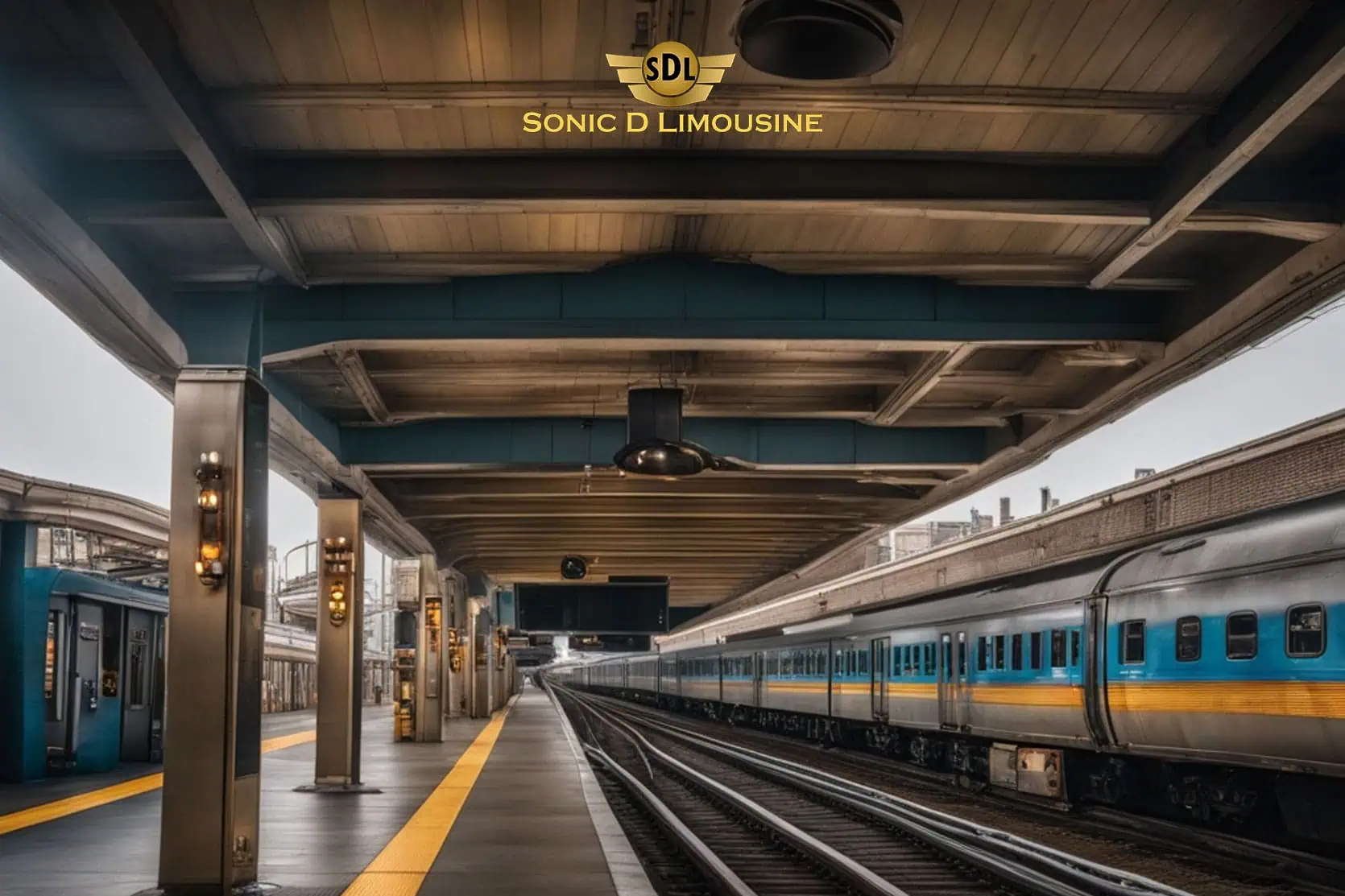Newark Penn Station is more than just a train station in New Jersey; it’s a vital transportation hub that connects the city of Newark with the rest of the New York City metropolitan area and beyond. Whether you’re a daily commuter, a first-time visitor, or a history enthusiast, this article is worth reading as it explores the rich history and modern significance of Newark Penn Station. From its Art Deco design to its crucial role in the region’s transit network, you’ll gain a comprehensive understanding of why this station is a cornerstone of New Jersey’s infrastructure.
Article Outline
The History and Architecture of Newark Penn Station: What Makes It Unique?
Newark Penn Station, dedicated on March 23, is a masterpiece of Art Deco architecture. The station’s design features large expanses of glass and intricate medallions that reflect the era’s style. The Pennsylvania Railroad, which originally built the station, aimed to create a grand entrance to Newark City, and today, it’s recognized on the National Register of Historic Places.
How Does Newark Penn Station Serve Commuters Daily?
As a commuter rail hub, Newark Penn Station serves millions of passengers annually. NJ Transit trains, PATH trains, and Amtrak intercity services all converge here, providing direct access to various destinations. Commuters can easily catch a train to New York City, Philadelphia’s 30th Street Station, or even Washington, D.C., making it an essential part of daily life for many.
What Rail Lines and Services Are Available at Newark Penn Station?
Newark Penn Station hosts several rail lines, including the Raritan Valley Line, which connects to Broad Street Station and beyond. Amtrak and NJ Transit offer a range of services, while the Port Authority Trans-Hudson (PATH) trains provide a rapid transit option to Jersey City and Manhattan. This variety of rail lines ensures seamless connectivity across the region.
Exploring the Newark Light Rail: What Are the Key Stops?
The Newark Light Rail system is an integral part of the station’s offerings. It connects passengers to key destinations like the New Jersey Performing Arts Center and the Newark Museum. Stops include Newark Broad Street and Branch Brook Park, making it easy to explore Newark City and its cultural landmarks.
How Do Bus Services Complement Rail Options at Newark Penn Station?
In addition to rail services, Newark Penn Station is a hub for NJ Transit bus lines and Greyhound services. These bus lines extend the station’s reach, providing access to areas not served by rail. Whether traveling within Newark or venturing further away from Newark, buses offer a flexible transit option.
What Amenities and Facilities Are Available Around the Station?
The main waiting room at Newark Penn Station is designed for comfort and efficiency, accommodating the needs of 42 million passengers annually. The station links to various amenities, including dining options and shops, ensuring travelers have everything they need before boarding a train.
How Does Newark Penn Station Connect to Air Travel?
AirTrain Newark provides a crucial link between the station and Newark Liberty International Airport’s airport terminals. This service offers a convenient option for travelers needing to transfer from rail to air travel, making Newark Penn Station a comprehensive transportation hub.
What Role Does Newark Penn Station Play in the Local Economy?
Newark Penn Station is not just a transit hub; it’s a catalyst for economic activity in the city of Newark. Its proximity to the Prudential Center and the New Jersey Devils’ home games drives foot traffic, supporting local businesses and contributing to the city’s vibrancy.
How Has Newark Penn Station Evolved Over the Years?
The history of transportation in Newark is closely tied to the evolution of Newark Penn Station. From its early days as part of the Central Railroad of New Jersey to its current status as a modern transit hub, the station has continually adapted to meet the changing needs of commuters and travelers.
How to Navigate Newark Penn Station Efficiently?
Navigating Newark Penn Station can be daunting for first-time visitors. Knowing where to find your train platform, how to transfer between services, and the best times to arrive (at least minutes prior to departure) can make your travel experience smoother. This section will offer tips and tricks for efficient navigation.
Detailed Explanations
The History and Architecture of Newark Penn Station: What Makes It Unique?
Newark Penn Station stands as a testament to the grandeur of early 20th-century design. Built by the Pennsylvania Railroad, this station was dedicated on March 23 and has since become an architectural icon in Newark City. The station’s Art Deco style is evident in its large expanses of glass and detailed medallions, which add a touch of elegance and historical significance. Recognized on the National Register of Historic Places, Newark Penn Station is not just a functional space but a piece of living history that continues to serve as a gateway to the city.
How Does Newark Penn Station Serve Commuters Daily?
As one of the busiest commuter rail hubs in the region, Newark Penn Station plays a crucial role in the daily lives of many. NJ Transit trains and PATH trains provide reliable service, offering direct access to the New York City metropolitan area and beyond. Amtrak intercity services also stop here, making it possible for commuters to travel to major cities like Philadelphia’s 30th Street Station and Washington, D.C. With such a wide range of services, Newark Penn Station is an indispensable part of New Jersey’s transportation network.
What Rail Lines and Services Are Available at Newark Penn Station?
Newark Penn Station hosts a variety of rail lines, ensuring comprehensive connectivity for its passengers. The Raritan Valley Line, for instance, provides a vital link to Broad Street Station and other key locations. Amtrak and NJ Transit services cater to both long-distance travelers and daily commuters, while the PATH trains offer a rapid transit option to Jersey City and Manhattan. This diverse array of rail lines makes Newark Penn Station a central hub for transit rail in the region.
Exploring the Newark Light Rail: What Are the Key Stops?
The Newark Light Rail system is an essential component of Newark Penn Station’s transit offerings. It connects passengers to significant locations such as the New Jersey Performing Arts Center and the Newark Museum. With stops at Newark Broad Street and Branch Brook Park, the light rail system makes it easy for travelers to explore Newark City’s cultural and recreational landmarks. Whether you’re heading to a show at the Jersey Performing Arts or enjoying a day at Branch Brook, the Newark Light Rail offers convenient access.
How Do Bus Services Complement Rail Options at Newark Penn Station?
In addition to its extensive rail network, Newark Penn Station serves as a hub for NJ Transit bus lines and Greyhound services. These bus lines provide critical connections to areas not directly served by rail, offering travelers flexibility and convenience. Whether you’re commuting within Newark or venturing further afield, the bus services at Newark Penn Station ensure that you can reach your destination with ease.
What Amenities and Facilities Are Available Around the Station?
Newark Penn Station is designed to cater to the needs of its diverse passenger base. The main waiting room is spacious and comfortable, accommodating the needs of 42 million passengers annually. Around the station, travelers will find various amenities, including dining options and shops, ensuring that they have everything they need before boarding a train. This combination of comfort and convenience makes Newark Penn Station a preferred choice for many travelers.
How Does Newark Penn Station Connect to Air Travel?
AirTrain Newark provides a seamless connection between Newark Penn Station and Newark Liberty International Airport’s airport terminals. This service is invaluable for travelers needing to transfer between rail and air travel, offering a hassle-free option for reaching their flights. With AirTrain Newark, Newark Penn Station solidifies its role as a comprehensive transportation hub, catering to the diverse needs of its passengers.
What Role Does Newark Penn Station Play in the Local Economy?
Beyond its function as a transit hub, Newark Penn Station is a significant driver of economic activity in Newark City. Its proximity to key attractions like the Prudential Center and the New Jersey Devils’ home games brings a steady stream of visitors, supporting local businesses and contributing to the city’s economic vitality. Newark Penn Station is not just a place to board a train; it’s a cornerstone of the community’s economic landscape.
How Has Newark Penn Station Evolved Over the Years?
The history of transportation in Newark is closely tied to the development of Newark Penn Station. From its origins as part of the Central Railroad of New Jersey to its current status as a modern transportation hub, the station has continually evolved to meet the needs of its users. This adaptability has ensured that Newark Penn Station remains a vital part of the region’s transit infrastructure, capable of serving the demands of today’s travelers.
How to Navigate Newark Penn Station Efficiently?
Navigating Newark Penn Station can be a challenge, especially for first-time visitors. Understanding where to find your train platform, how to transfer between services, and the best times to arrive (at least minutes prior to departure) can significantly enhance your travel experience. By familiarizing yourself with the station’s layout and services, you can ensure a smooth and efficient journey, whether you’re commuting locally or traveling long-distance.
Summary
- Newark Penn Station is a key transportation hub in New Jersey, with a rich history and distinctive Art Deco architecture.
- It serves millions of commuters daily with NJ Transit, PATH trains, and Amtrak intercity services.
- The station hosts several rail lines, including the Raritan Valley Line, offering comprehensive connectivity.
- Newark Light Rail connects passengers to cultural landmarks like the New Jersey Performing Arts Center.
- Bus services complement rail options, providing flexible transit solutions.
- Amenities around the station cater to the needs of 42 million passengers annually.
- AirTrain Newark links the station to Newark Liberty International Airport, enhancing its role as a transportation hub.
- Newark Penn Station supports local economic activity, benefiting businesses and attractions like the Prudential Center.
- The station has evolved over the years to meet the changing needs of travelers.
- Efficient navigation of the station is key for a smooth travel experience.












































0 Comments